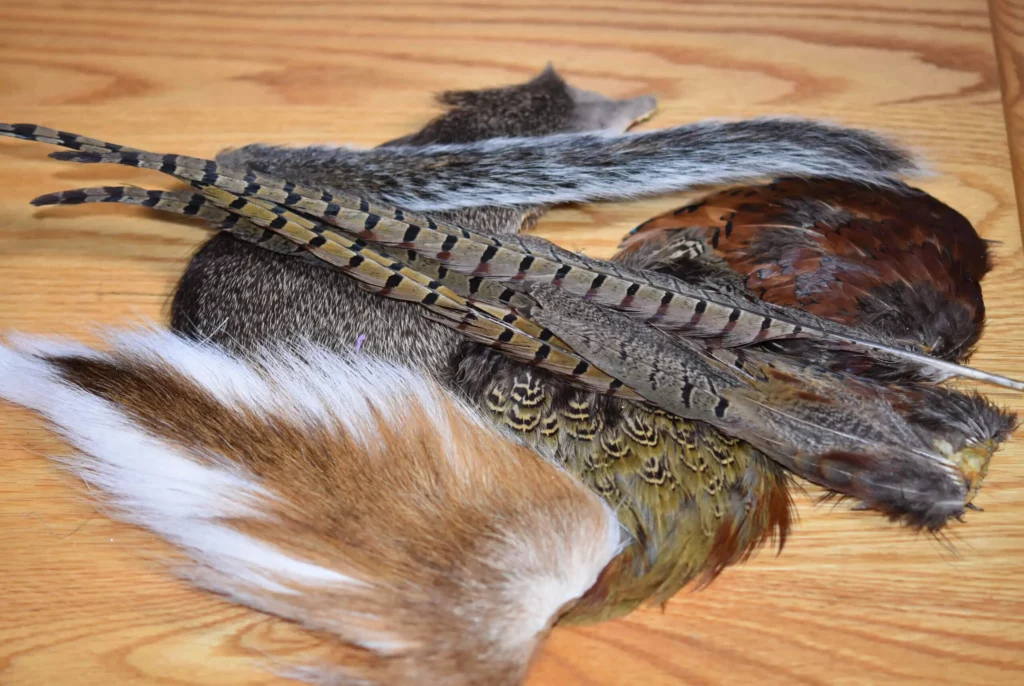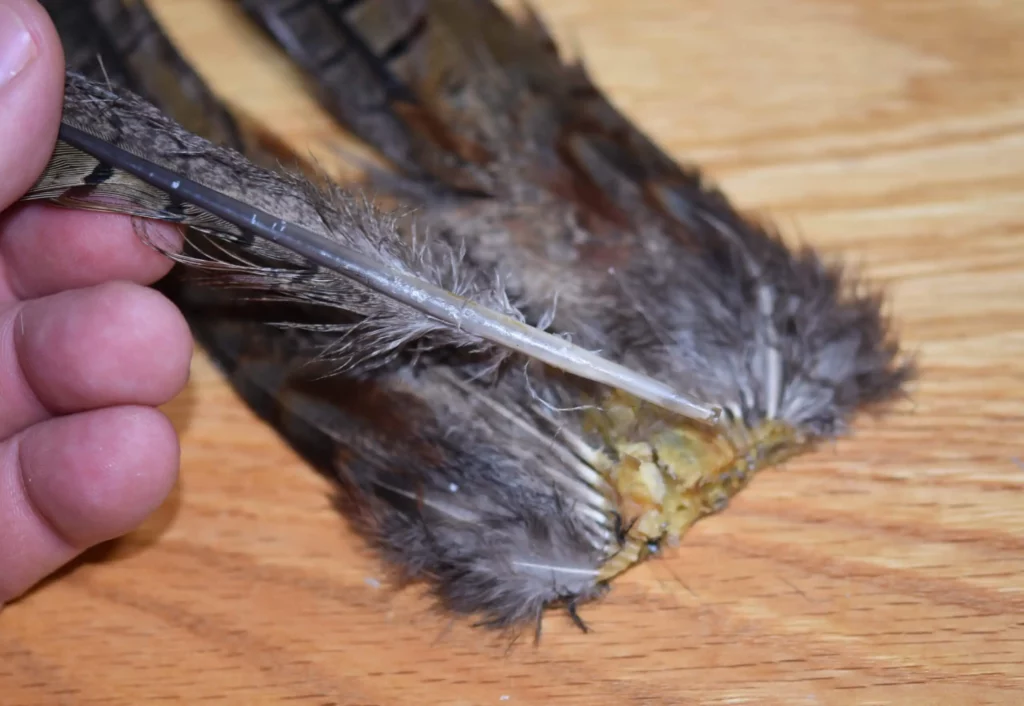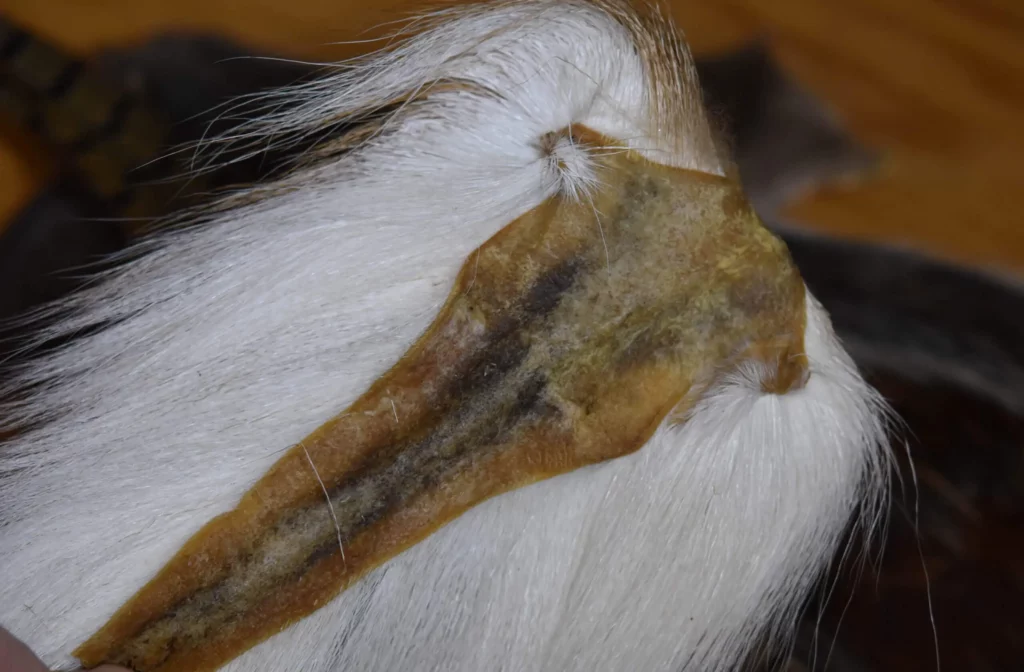How to Clean and Preserve Natural Feathers and Furs for Fly Tying

Although synthetic materials have certainly grown in popularity in recent years, some of the best materials for tying flies are and always will be natural feathers and fur. Pheasant tails are a prime example. Not only is this the primary ingredient for its namesake, the Pheasant Tail Nymph, but it’s a major component of countless deadly patterns. Rabbit fur and deer tails are also examples. If you’re a hunter, or know someone who hunts, you may have access to a wealth of free fly tying materials from harvested game, and with a little preparation, these feathers and furs can last for many years.
At one time, I was a licensed taxidermist, and some of these methods listed here were used for cleaning and preserving birds and small mammals for mounting. While some feathers and furs can be air-dried for fly tying purposes, without at least some form of preservation, the oils within them as well as any meat on the hide can start to taint. Not only will you be able to smell the difference in these feathers, but they could potentially attract bugs and mites to the rest of your stash, too. This can be easily avoided with a few simple steps to make sure these materials are cleaned and preserved properly.
Please note, though, that these techniques work best with thin-skinned animals and game and small chunks of fur. For full-sized hides of larger animals such as groundhogs, fox, raccoons, deer, and other mammals, your best option is to ship these to a tannery for professional tanning. However, almost any bird skin or tail feathers, rabbits, and squirrels, these methods work quite well.
Prepping Materials
So let’s say a buddy gives you the tail from a pheasant or grouse. Typically, hunters cut off the whole tail, so there will likely be meat all around the base. The easiest thing to do is pull each feather loose from the bundle or clip it at the base next to the skin. You’ll have a bunch of loose feathers but you won’t have to worry about cleaning the whole butt section of the tail.
Breast and rump feathers are better left intact and not plucked. It’s better to receive them still on the cape, which will make cleaning easier and a lot less messy than trying to deal with a bunch of loose feathers. After they’re cleaned, they can be plucked. To prep these materials, whether a cape or rabbit or squirrel hide, simply pull off any small clumps of meat still clinging to the skin.

Cleaning Materials
Although the feathers and fur from these critters may appear clean when first removed from the carcass, they are deceptively dirty. Only with thorough cleaning will their natural vibrance really start to shine through.
One you have the capes off of the birds or the hides from the mammals, place them in a bucket with cool water and a liberal amount of Dawn soap. Make sure to swish around the materials and really work the soap into the feathers and hides. Let them soak in the bucket for 20-30 minutes and then rinse with cold water. Don’t be surprised to find that the bath solution has a yellow-brown tint to it from all the dirt and grease cleaned from the feathers and fur.
Degreasing Materials
After pulling the materials from the Dawn bath, they’ll look pretty raggedy. No worries. Now it’s time to bring them back to life with a degreaser.
One of the best degreasing agents available over-the-counter is Coleman Fuel or any generic equivalent white gas often used in lanterns and other camping products. Coleman Fuel evaporates quickly and more stable than straight gasoline. Don’t be tempted to use straight gasoline just because it’s cheaper than Coleman Fuel. Gasoline is not only more dangerous to work with, but the fumes are harsher and won’t evaporate from the material as quickly. You’ll end up with a bunch of materials that reek of gasoline. The smell from Coleman Fuel, though, quickly fades as soon as it’s dry.
Again place the materials in a bucket and pour in just enough Coleman Fuel to cover them. If it’s below freezing outside, place a cover on the bucket, which will prevent any clumps of ice forming on the materials. Do not do this step indoors! Fumes can accumulate in any enclosed area and be highly combustible. Always perform this step outdoors, preferably on a sunny day to accelerate evaporation!
Note, you may want to wear a facemask and rubber gloves when working with this fuel, especially if you have sensitive or dry skin. The fuel is great for degreasing feathers and furs, which means it’s also good at pulling the oils from your skin. Wearing gloves is also advised simply for keeping the mess contained. As soon as your done dealing with gas, you can discard the gloves. Before you do, though, lay the gloves out for a couple minutes to allow the gas to fully evaporate from the material. Make sure they are dry before throwing them into the trashcan.
Swish the materials around in the bucket and let them soak for 20-30 minutes before removing them from the Coleman Fuel. If you have an old towel available, lay it out on the ground. Again, wearing a facemask and rubber gloves, lift the materials out of the fuel and gently squeeze the excess liquid from them and place them on the towel. Pat the feathers dry.
As when pulling the materials from the Dawn bath, the fuel should have some a cloudiness to it and will typically have some thick yellow-brown stuff settled on the bottom of the bucket. This is the grease that has been pulled from the materials.
Note, dispose of the used fuel immediately, as soon as the materials are out. It’s easy to get distracted with the materials and forget to do this until much later, creating a hazard. So take care of it right away.

Are You Enjoying What You're Reading?
Stay up to date with the Dark Skies Fly Fishing monthly newsletter for free and receive the latest posts in fly fishing news, tricks, tips, and techniques, stream reports, as well as updates on new flies added to the Online Store and exclusive discounts!
Sign Up NowDrying Materials
As mentioned, Coleman Fuel evaporates very quickly. You can set the materials in the warm sunshine for a few minutes to start drying, but they’ll never truly come back to life without a little help. To do this, I use a hairdryer on low heat and slowly go over the materials. Don’t spend too much time in one spot. You don’t want the skin to get hot, just warm. Dry it much like you’d dry your own hair!
If you were able to pat the materials fairly dry with the towel, they’ll come to life almost immediately. Usually only a few minutes with the hair dryer is enough because the Coleman Fuel evaporates so quickly. You should be left with a cape, tail feathers, or hide that is clean with a natural, vibrant sheen.

Preserving Materials
The best over-the-counter preservative on Earth is borax. Borax is relatively inexpensive and a great household cleaner that’s often used as a laundry detergent booster, and it’s available at almost any grocery or hardware store that sells these types of products. Borax is also a great bug repellent and will prolong the life the materials indefinitely.
Lay the materials flat on a piece of cardboard and sprinkle the borax onto any raw skin. Gently rub the materials into the skin and let it dry. Thin-skinned birds such as pheasant and grouse will dry quickly, within a few hours, but thicker-skinned materials such as squirrel hides and deer tails may take several days.
After a day or so, I like to shake off the excess borax, but I still let the materials lay on the cardboard, skin side up, until the skin becomes stiff. That’s how you’ll know it’s dry and ready to be added to your stash.
Conclusion
If you’re hellbent on skipping these steps, you can air dry materials. Be forewarned, though, that the materials will eventually start to smell as the oils break down, and that can potentially attract unwanted critters to your other materials. You can borax the heck out of the materials, which will help, but the feathers and fur won’t have their natural luster, and they’ll always appear dirty.
At minimum, though, you should pull off the meat or fat from these materials and borax them heavily. Do not store them away until they are completely dried. Even materials treated using the steps above should be completely dried before storing them away. Dampness will ruin all materials, whether they’ve been properly cleaned and preserved or not.
But if you want materials that will last indefinitely, use the steps outlined here. With proper prepping, cleaning, degreasing, and preserving, you’ll end up with materials that are vibrant, which will in turn make your flies shine.
Have a fly fishing question you’d like answered? Drop us a line at info@darkskskiesflyfishing.com! If we use your question in a blog post or in the newsletter, we’ll send you a FREE fly box with a dozen of our favorite nymphs and dry flies!


I love those great tips I have been using moth balls for my materials but now from your help I will be cleaning mine I get all my materials from a fly shop .Great advice thanks